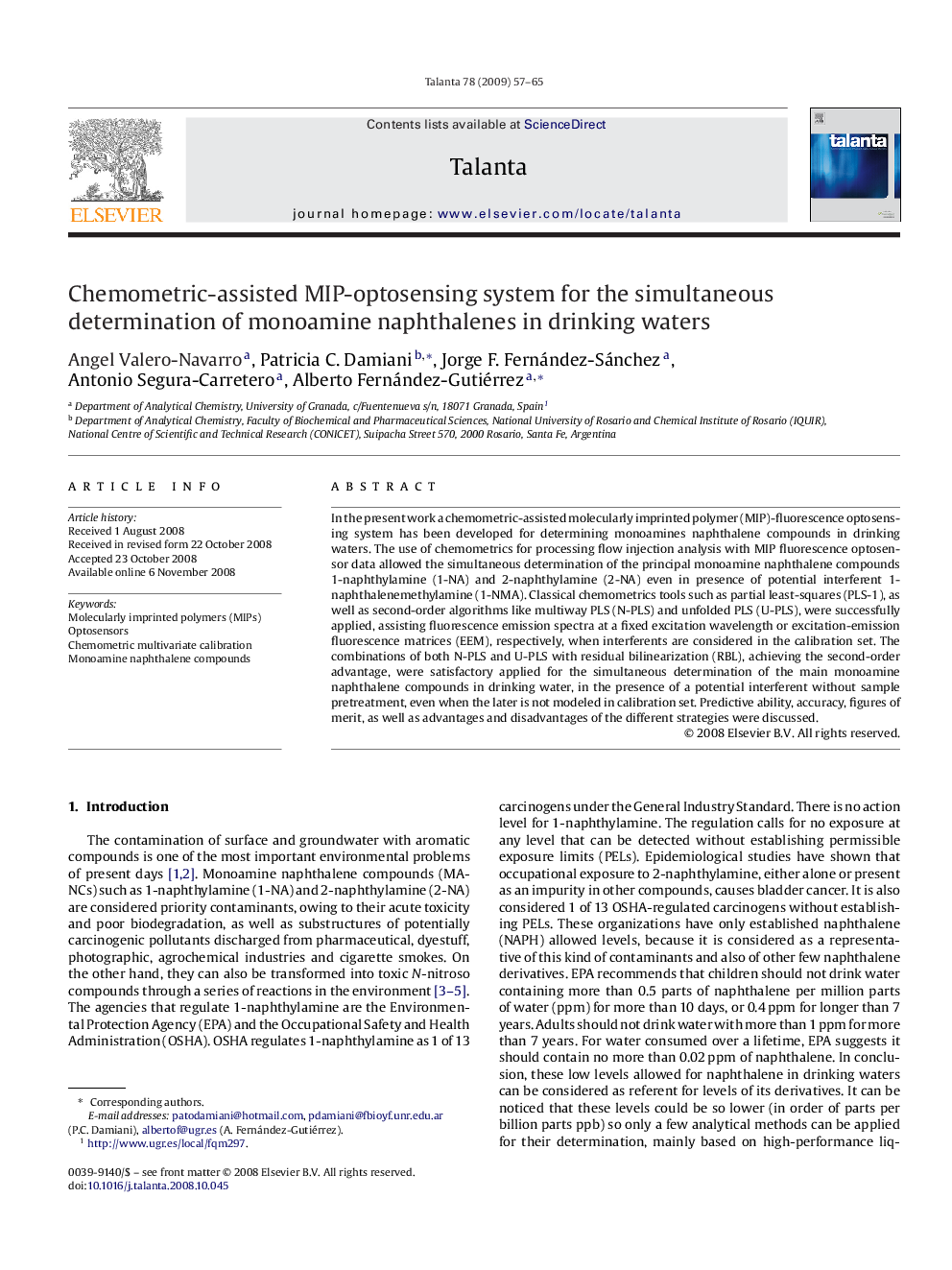| Article ID | Journal | Published Year | Pages | File Type |
|---|---|---|---|---|
| 1245096 | Talanta | 2009 | 9 Pages |
Abstract
In the present work a chemometric-assisted molecularly imprinted polymer (MIP)-fluorescence optosensing system has been developed for determining monoamines naphthalene compounds in drinking waters. The use of chemometrics for processing flow injection analysis with MIP fluorescence optosensor data allowed the simultaneous determination of the principal monoamine naphthalene compounds 1-naphthylamine (1-NA) and 2-naphthylamine (2-NA) even in presence of potential interferent 1-naphthalenemethylamine (1-NMA). Classical chemometrics tools such as partial least-squares (PLS-1), as well as second-order algorithms like multiway PLS (N-PLS) and unfolded PLS (U-PLS), were successfully applied, assisting fluorescence emission spectra at a fixed excitation wavelength or excitation-emission fluorescence matrices (EEM), respectively, when interferents are considered in the calibration set. The combinations of both N-PLS and U-PLS with residual bilinearization (RBL), achieving the second-order advantage, were satisfactory applied for the simultaneous determination of the main monoamine naphthalene compounds in drinking water, in the presence of a potential interferent without sample pretreatment, even when the later is not modeled in calibration set. Predictive ability, accuracy, figures of merit, as well as advantages and disadvantages of the different strategies were discussed.
Related Topics
Physical Sciences and Engineering
Chemistry
Analytical Chemistry
Authors
Angel Valero-Navarro, Patricia C. Damiani, Jorge F. Fernández-Sánchez, Antonio Segura-Carretero, Alberto Fernández-Gutiérrez,
